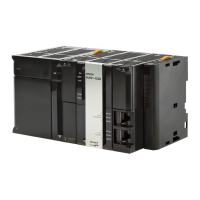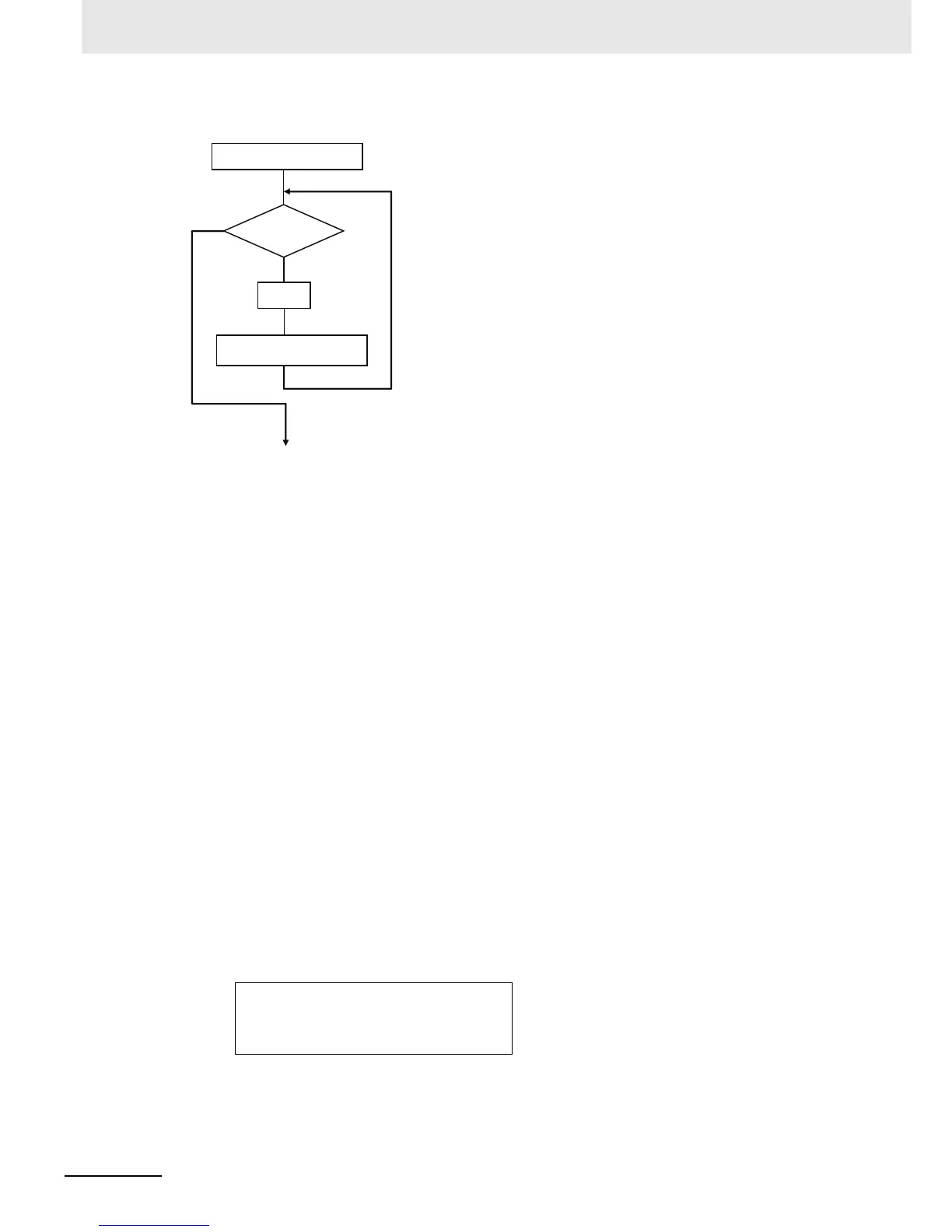6 Programming
6-94
NJ-series CPU Unit Software User’s Manual (W501)
Process Flow Diagram:
Application:
Use this construct when you know in advance how many times you want to repeat a process.
This type of repeat construct is particularly effective to specify each element of an array variable
based on the value of a FOR variable.
Description:
A decision is made based on the evaluation of <initial_value>, <end_value>, and <increment/decre-
ment>.
When <FOR_variable> is <initial_value>, <statement> is executed.
After execution, the value of <increment/decrement> is added to <FOR_variable> and <statement>
is executed again if <FOR_variable> is less than the value of the <end_value>.
After execution, the value of <increment/decrement> is added to <FOR_variable> and <statement>
is executed again if <FOR_variable> is less than the value of the <end_value>.
This process is repeated.
The loop ends when <FOR_variable> > <end_value>.
If <increment/decrement> is negative, the directions of the comparison symbols in the above state-
ments are reversed.
Precautions:
• If the FOR variable is signed, <increment/decrement> can be a negative number.
• FOR must always be used together with END_FOR.
• The FOR variable becomes the end value plus increment/decrement after execution of the pro-
cess is completed for the end value. This ends the FOR construct.
Example: When the FOR construct is completed in the following ST statements, the value of i is
101.
FOR i:=0 TO 100 DO
X[i]:=0;
END_FOR;
// Here, i is 101.
FOR variable = Initial value
TRUE
Statement
FALSE
Repeated
End
FOR variable >
end value?
FOR variable +
Increment/decrement value

